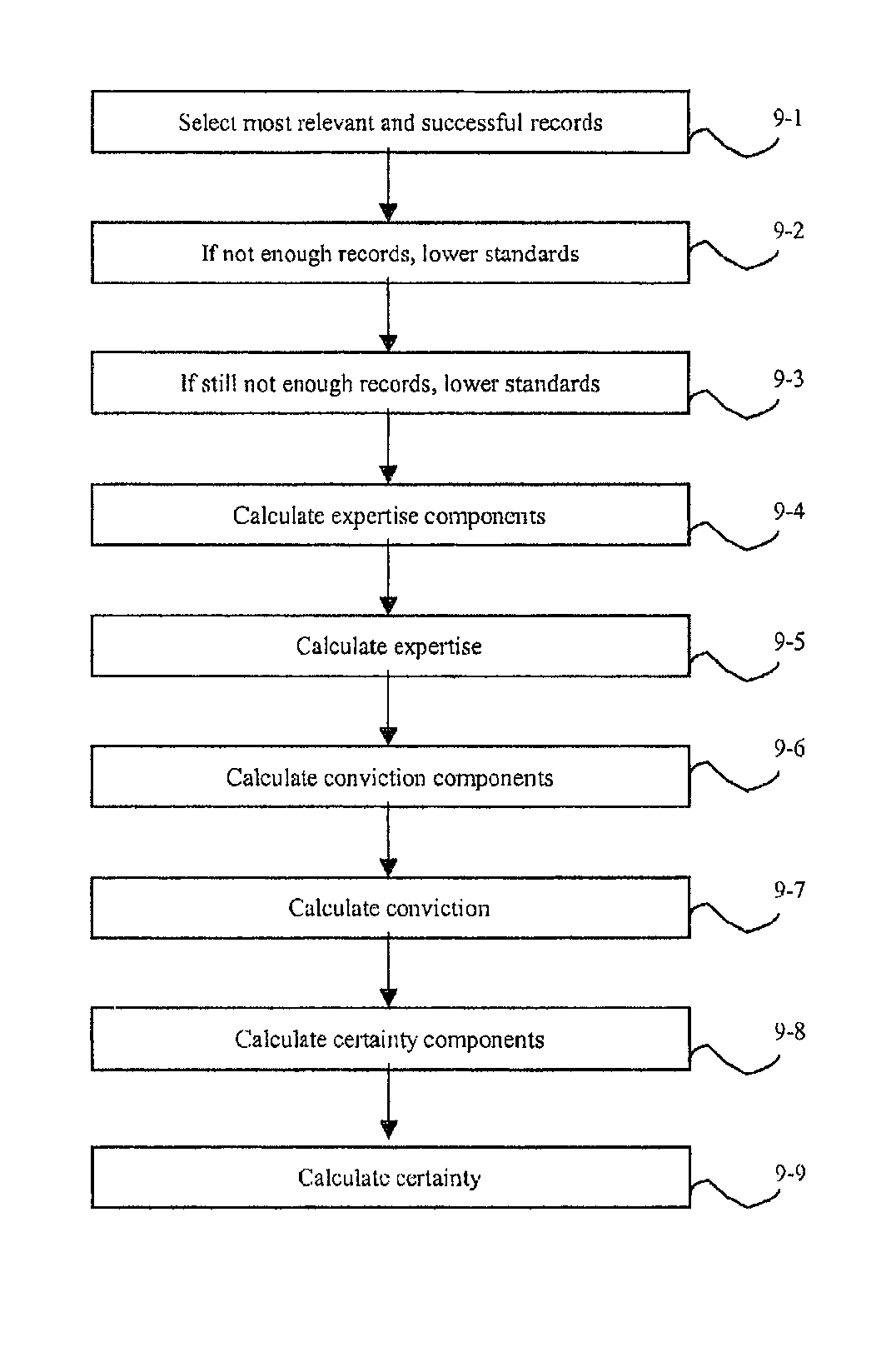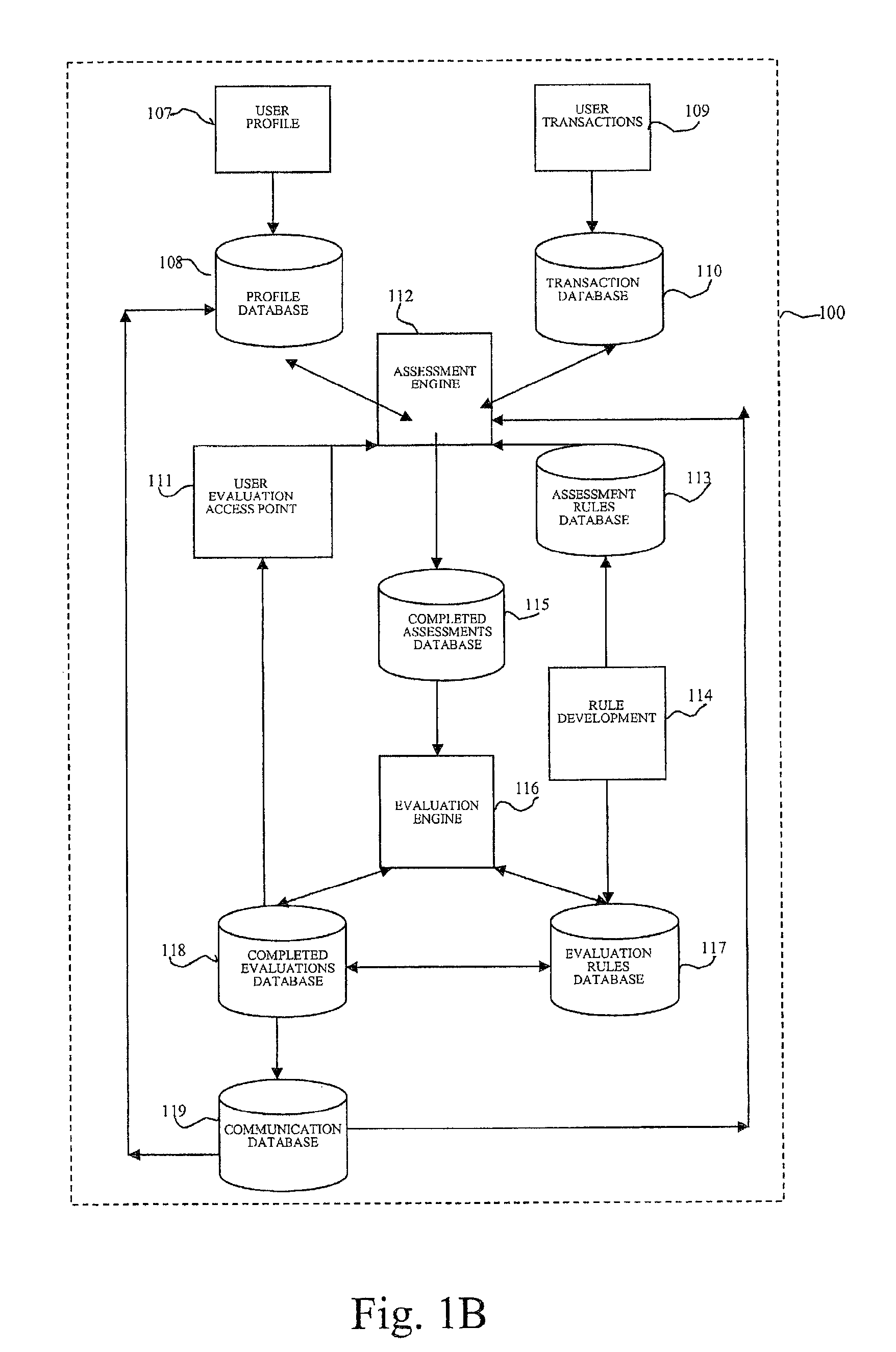System and method for generating transaction based recommendations
a technology of transaction and recommendation, applied in the field of system and method for generating transaction based recommendation, to achieve the effect of reducing investor confusion, reducing investor vulnerability to gaps, and reducing investor risk
- Summary
- Abstract
- Description
- Claims
- Application Information
AI Technical Summary
Benefits of technology
Problems solved by technology
Method used
Image
Examples
Embodiment Construction
[0032]The following terms are meant to be used throughout this specification with their respective following definitions:
[0033]User—used to describe an entity that makes a transaction, which is evaluated by the system. In one embodiment, users are typically individual traders or entities uniquely identified with distinct investment styles and goals and with a distinct record of transactions that may be assessed by the present invention. A user may have more than one account through which transactions can be executed, in which case processes described below may be executed for single accounts and / or across multiple accounts.
[0034]Subscriber—used here to describe a user authorized to make requests of or receive evaluation or recommendation information from the present invention. All subscribers are presumed in the preferred embodiment also to be users, such that a subscriber's past transaction history is one of the inputs for transaction evaluation. It is possible, however, in certain...
PUM
 Login to View More
Login to View More Abstract
Description
Claims
Application Information
 Login to View More
Login to View More - R&D
- Intellectual Property
- Life Sciences
- Materials
- Tech Scout
- Unparalleled Data Quality
- Higher Quality Content
- 60% Fewer Hallucinations
Browse by: Latest US Patents, China's latest patents, Technical Efficacy Thesaurus, Application Domain, Technology Topic, Popular Technical Reports.
© 2025 PatSnap. All rights reserved.Legal|Privacy policy|Modern Slavery Act Transparency Statement|Sitemap|About US| Contact US: help@patsnap.com



